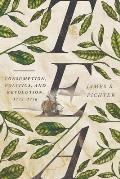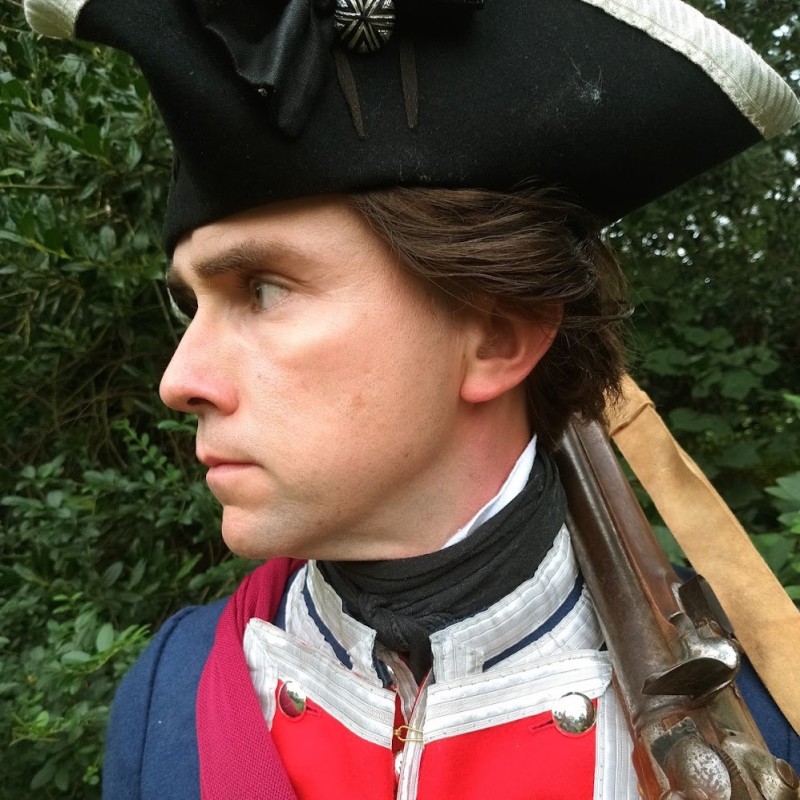As I was trying to sort out the accounts of the
New York Tea Party, one of my biggest questions was how the
New York Whigs got advance word that
James Chambers was bringing in
tea. First another merchant captain told the Philadelphia Whigs, who sent word to New York. Then a third captain showed up with nearly the same information, which he had copied from Chambers’s
Customs filings.
And literally that tea was nobody’s business but Capt. Chambers’s—he had bought it himself, he was transporting it, and he would presumably pay the duty on it.
Now the American tea boycott made tea everybody’s business for a while. But no one seems to have found it remarkable for information on Capt. Chambers’s cargo to reach New York before he did. Today companies operate on the assumption that most such commercial information is proprietary, not public.
On Friday I attended a seminar at the Massachusetts Historical Society, where research fellow Hannah Tucker helped make sense of that question for me. A graduate student at the University of Virginia, she’s working on the patterns and practices of merchant captains in the eighteenth-century British Empire.
In that period, I grasped from Tucker’s remarks, the uncertainty of Atlantic crossings, the difficulty of communication, and merchants’ and ship owners’ inability to supervise sea captains closely meant that they preferred an open information system to a closed one. It was in nearly everyone’s interest to know about other people’s business. If you tried to keep information within your firm, you could easily find yourself cut off with no information at all.
Thus, sea captains sent their merchant employers signed copies of their bills of lading via two or three other captains—rival mariners working for rival merchants. Captains shared news with others they met at sea. After landing, captains were debriefed for news they had about other ships out of the same port. And apparently it wasn’t that odd for one captain to view the Customs documents of another.
The Massachusetts Historical Society hosts many such insightful seminars on different topics and in different formats, all free and open to the public. (Some require reserving a spot in advance so the society can be sure it has enough seats and sandwiches.)
The session with Hannah Tucker was a
“brown-bag seminar,” scheduled at noon (attendees can eat lunch during it); researchers early in their research discuss their current projects and what nearby documents they plan to examine. There are more formal evening series, including the
Boston Area Early American History Seminar, when scholars share essays farther along toward publication.
The M.H.S. just announced its schedule of events for the fall and beyond, and here are seminars that caught my eye because of their links to Revolutionary America.
Friday, 7 Sept 2018, 12:00 noon
American Silver, Chinese Silverwares, and the Global Circulation of Value
Susan Eberhard, University of California, Berkeley
Silver coin was the primary commodity shipped to
China from the United States in the late eighteenth and nineteenth centuries, some of which was reworked into silverwares by Chinese
craftsmen for British and American buyers. This talk explores the different silver conduits of the American trade relationship with China. Far from a neutral medium, how were understandings of its materiality mobilized in cross-cultural transactions?
Friday, 14 Sept 2018, 12:00 noon
A Possible Connection between a Scandal and Susanna Rowson’s Last Novel
Steven Epley, Samford University
The talk will describe evidence in letters and public records suggesting that best-selling author
Susanna Rowson may have based her last novel,
Lucy Temple, at least in part on a scandal in which she was innocently but indirectly involved in
Medford, Mass., in 1799.
Wednesday, 17 Oct 2018, 12:00 noon
“Watering of the Olive Plant”: Catechisms and Catechizing in Early New England
Roberto Flores de Apodaca, University of South Carolina
Early New Englanders produced and used an unusually large number of catechisms. These catechisms shaped relations of
faith for church membership, provided content for missions to the
Indians, and empowered lay persons theologically to critique their ministers. This talk explores the content and the function of these unique, question and answer documents.
Monday, 22 Oct 2018, 5:15-7:30 P.M.
Paul Revere’s Ride through Digital History
Joseph M. Adelman, Framingham State University; Liz Covart and Karin Wulf, Omohundro Institute
This seminar examines components of the Omohundro Institute’s multi-platform
digital project and podcast series,
Doing History: To the Revolution. It explores Episode 130, “
Paul Revere’s Ride through History,” and the ways the topic was constructed through narrative and audio effects, as well as the content in the complementary reader app.
Tuesday, 6 Nov 2018, 5:15-7:30 P.M.
“A Rotten-Hearted Fellow”: The Rise of Alexander McDougall
Christopher Minty, the Adams Papers, Massachusetts Historical Society
Comment: Brendan McConville, Boston University
Historians have often grouped the DeLanceys of New York as self-interested opportunists who were destined to become
loyalists. By focusing on the rise of
Alexander McDougall, this paper offers a new interpretation, demonstrating how the DeLanceys and McDougall
mobilized groups with competing visions of New York’s political economy. These prewar factions stayed in opposition until the Revolutionary War, thus shedding new light on the coming of the American Revolution.
Tuesday, 8 Jan 2019, 5:15-7:30 P.M.
The Consecration of Samuel Seabury and the Crisis of Atlantic Episcopacy, 1782-1807
Brent Sirota, North Carolina State University
Comment: Chris Beneke, Bentley University
Samuel Seabury’s consecration in 1784 signaled a transformation in the organization of American Protestantism. After more than a century of resistance to the office of bishops, American Methodists and Episcopalians and
Canadian Anglicans all established some form of episcopal superintendency after the
Peace of Paris. This paper considers how the making of American episcopacy and the controversies surrounding it betrayed a lack of consensus regarding the relationship between church, state and civil society in the Protestant Atlantic.
Tuesday, 5 Mar 2019, 5:15-7:30 P.M.
Parson Weems: Maker and Remaker
Steven C. Bullock, Worcester Polytechnic Institute
Comment: Elizabeth Maddock-Dillon, Northeastern University
This paper argues that
Mason Locke Weems’s biography of
George Washington built a bridge between Washington and the world of Abraham Lincoln and Ellen Montgomery. Weems’s stories were not just expressing early-19th century cultural commonplaces, but helping to create them. The paper connects these transformations with Weems’s work to recover Weems’s importance within his own time.
Tuesday, 7 May 2019, 5:15-7:30 P.M.
Panel: After the Fighting: The Struggle for Revolutionary Settlement
Eliga Gould, University of New Hampshire; Katherine Grandjean, Wellesley College; Stephen Marini, Wellesley College; Brendan McConville, Boston University
In the ten years after the American victory at
Yorktown in 1781, the nation faced myriad problems and challenges. This panel examines how the revolutionary generation confronted issues of
diplomacy, governance and
economic growth, and how the legacies of warfare and political convulsion shaped spiritual and social behaviors in those troubled years.
Check out the
M.H.S. Events page for other sessions about other historical periods, subjects, and approaches.

















